Mystery
Lights Page 1
Rest assured that there is
more to this mystery than mere car lights. Instead of looking
southwest (in the general direction of the red flashing tower and
Chinati Mountain) try looking to the southeast (you will probably see a
green mercury vapor ranch light in that direction), to the south (in
the general direction of the little white pump house but beyond it) and
west (just a little left of Marfa).
Ranch trucks can also be seen to the south and southeast but vehicles in
Mitchell Flat are close enough to detect taillights and headlight beams
if you are paying close attention. Binoculars are not essential
but certainly help when it comes to sorting out vehicle lights from
mystery lights. You need to have a certain amount of luck or else
patience because Marfa's Mystery Lights appear only a few times a year. But
if it is your lucky night you may be treated to some very unusual
lights.
Mystery Lights (MLs)
typically pulse with varying levels of intensity going all the way from
very bright to completely off and then back on again. Colors are most
often in the white to amber or orange range with occasional transition
to brilliant red. Bright red MLs are short lived. They either
transition back to very bright or else go out completely.
Mystery Lights fly above
the desert with typical altitudes in the 10 to 400 feet range although
one version (I call them Type IVs) do exist entirely above the horizon.
High flying Type IVs are more dynamic.
In addition to pulsing, MLs
love to execute divides (some times many divisions will occur resulting
in appearance of many MLs) and mergers (recombination of divided
lights). The off-spring will sometimes seem to orbit around the parent
or else dance back and forth. These antics are a pretty clear
indications that you are seeing actual MLs.
MLs may stay in one spot
and pulse on and off with varying levels of intensity or they may move
across the desert floor usually to the Northwest but they might go in
any direction and reversals are common. ML events can last anywhere
from milliseconds to more than an hour (10.5 hours being the longest ever
reported). The mean duration is 4 minutes but "Good" ML events typically last around 15 to 20 minutes.
Below are a few
photographic examples of what you might see. The "rainbow-like"
patterns are mystery light spectra generated in some of my camera lenses
and not something that you will actually see. Also, these pictures are
all time exposures so moving MLs create light tracks during the time my
camera shutter is open. If you were there to witness these events you
would only see a light (or lights) moving low across the desert. More
examples are on the next page.
Images and text are protected
by copyright. Copying is prohibited.

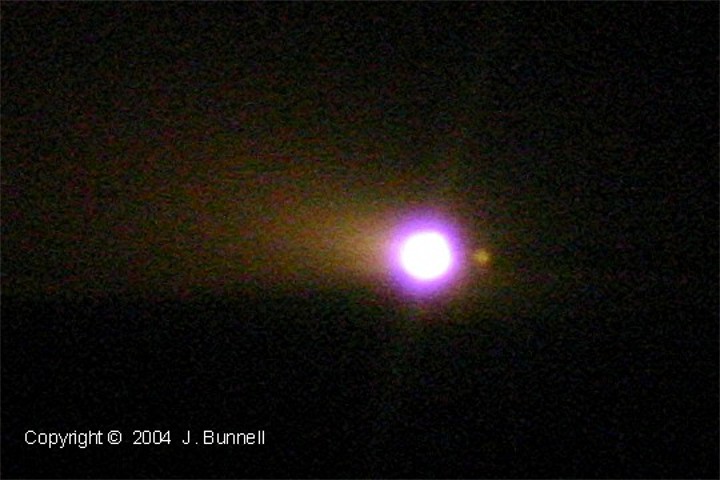
About 1/3 of the time mystery lights (MLs) are stationary
(I call these Type II). When that happens time exposures show the
disk instead of a light track. The image on the left has a red
surround that is real but the purple surround on the right is a by
product of the lens used to make that photograph
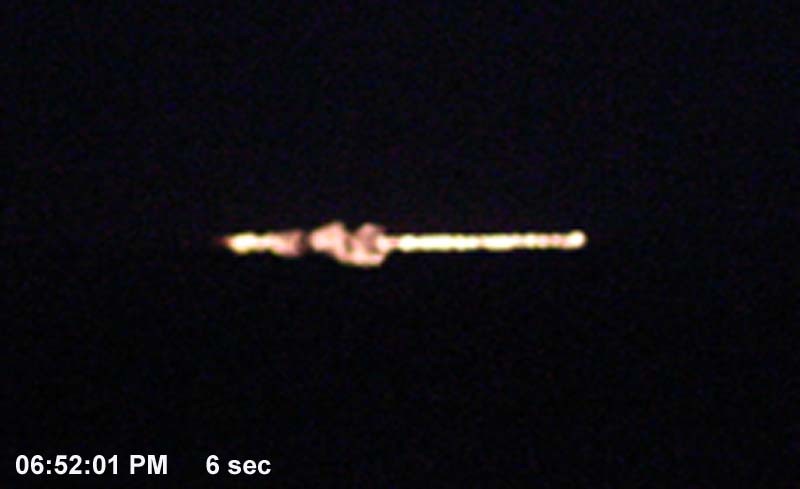
This 6 second time exposure captured a period of
expansion as the ML moved right to left. Notice how the color
becomes reddish as the light source expands suggesting that the
expansion resulted in cooling (possibly an adiabatic process).
Interestingly, the color shifts back to white-yellow as the light source
contracts back to a smaller size. This ML continued moving to the
left.
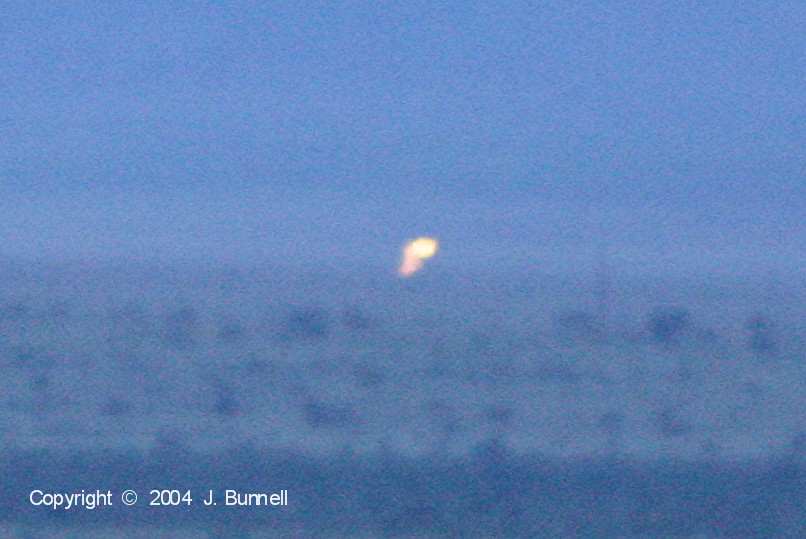
What is interesting in this photograph is the reddish
excursion as if something is losing energy and descending toward the
ground.
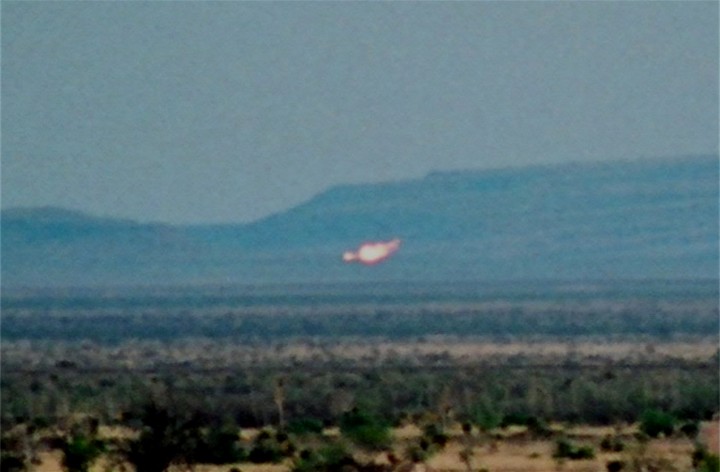
This image appears on the cover of my book. It is a
time exposure of a moving light source near Whirlwind Mesa. Soon
after this photograph was taken the light divided into multiple lights.
Some of the off-spring hung around to oscillate or orbit (shown directly
below and on the next page) while others sped off to the northwest and
traveled many miles before extinguishing.
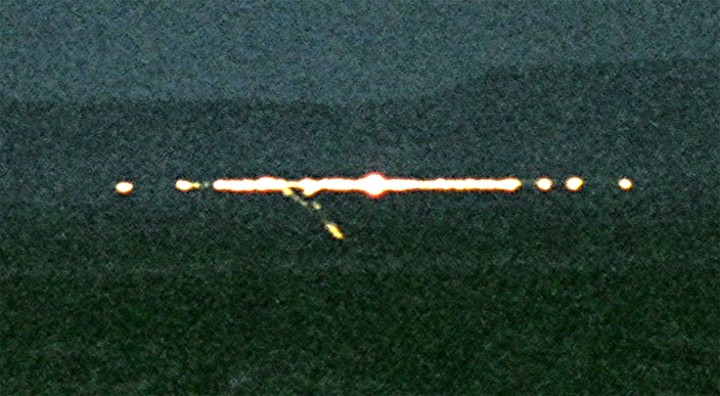
This time exposure followed not long after the photograph
directly above it. The bright center is the primary ML and the
rest of the light track was created by one or more MLs orbiting this
primary center or else they were oscillating back and forth. There
is no way to know which but I suspect light patterns such as these are
created by off-spring MLs orbiting the primary. Notice the two
extensions that slope down toward the ground. These extensions may
have been created by MLs running out of energy and descending toward the
ground before going out.
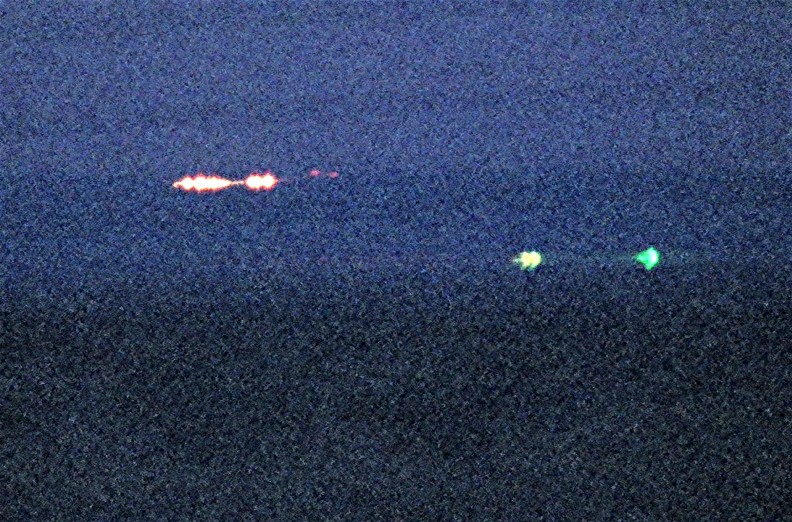
The 'Chevron' effect seen in this photograph was caused
by wind disturbing my tripod mounted camera. The white-yellow and
red lights located higher up (they are estimated to be at about 400
feet) are light tracks of real MLs. The greenish lower left light
is a Mercury Vapor (MV) ranch light and it is stationary so the right to
left spread reveals the total amount of wind induced camera oscillation.
The two red MLs are not spread so they occurred when the camera was not
in motion. The lower right green light is part of emission spectra
from the MV light created in my camera lens.
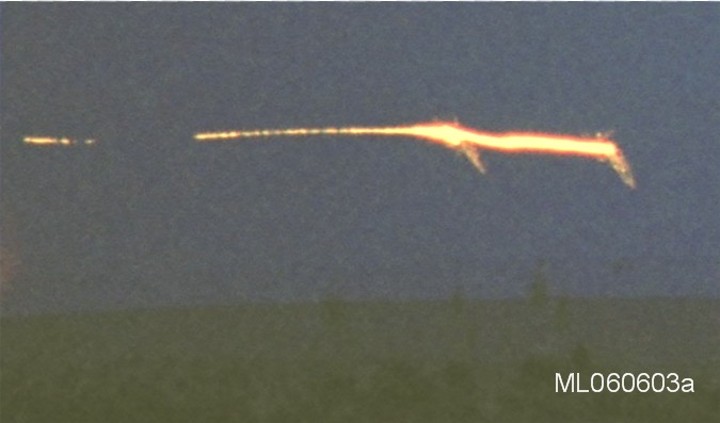
One type of ML exists entirely above the horizon. I
call these Type IVs and they are hard to photograph because they move
very fast and are short lived. This may be the only photograph
ever taken of Type IVs. There are two MLs smeared together in this
time exposure. In my haste to take this photograph I accidentally
bumped the camera and created two slopping artifacts seen on the right.
This was a single bump and it shows that there were two lights involved.
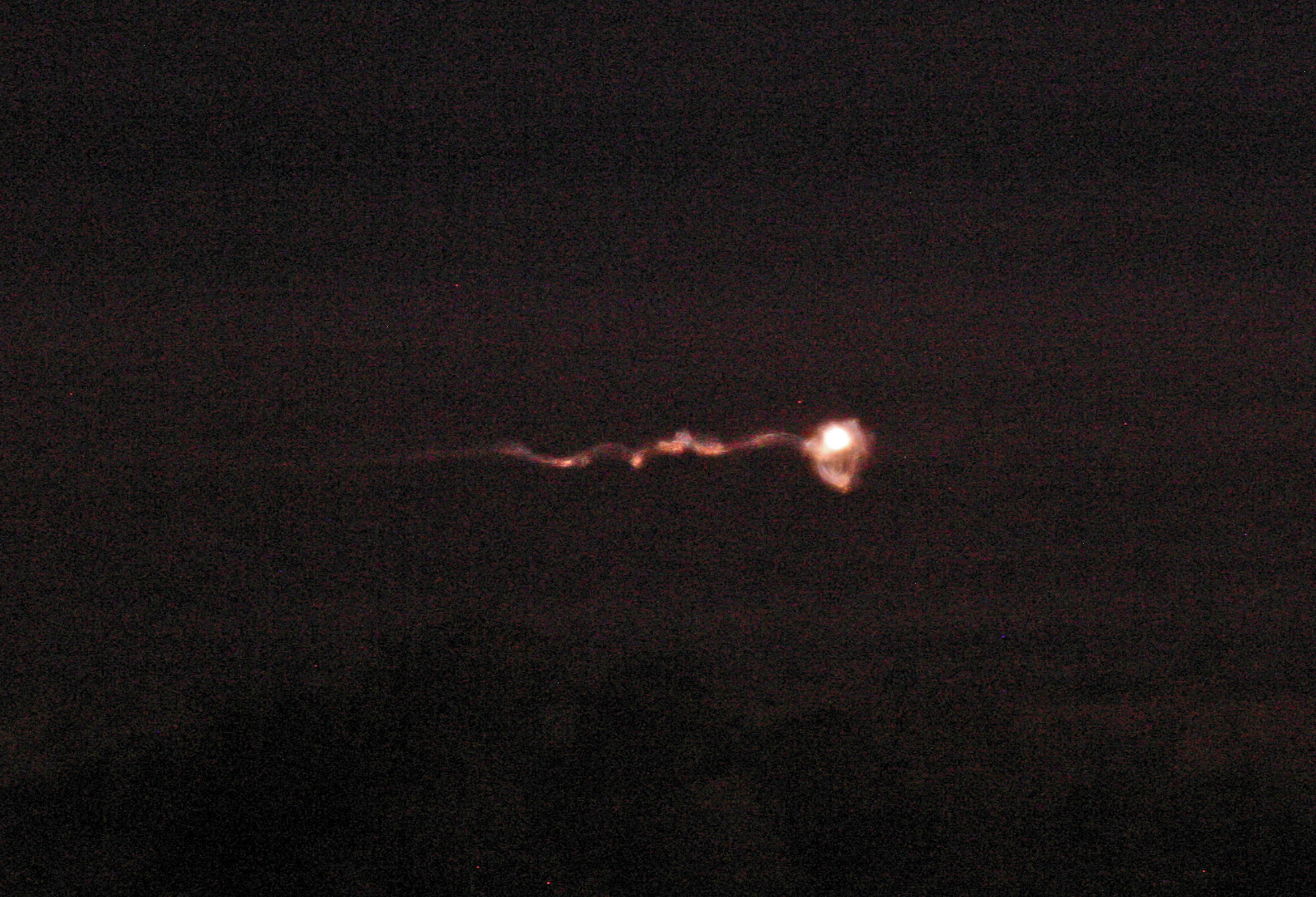
An interesting ML photographed from the Marfa Lights View
Park on July 23, 2007. The ML was moving left to right not long
after sunset. This photograph was made using an infrared capable
camera that nicely captures elements not visible to the naked eye.
I put this page together to show the wide range of
possible ML configurations. More ML images are presented on the
next page.
